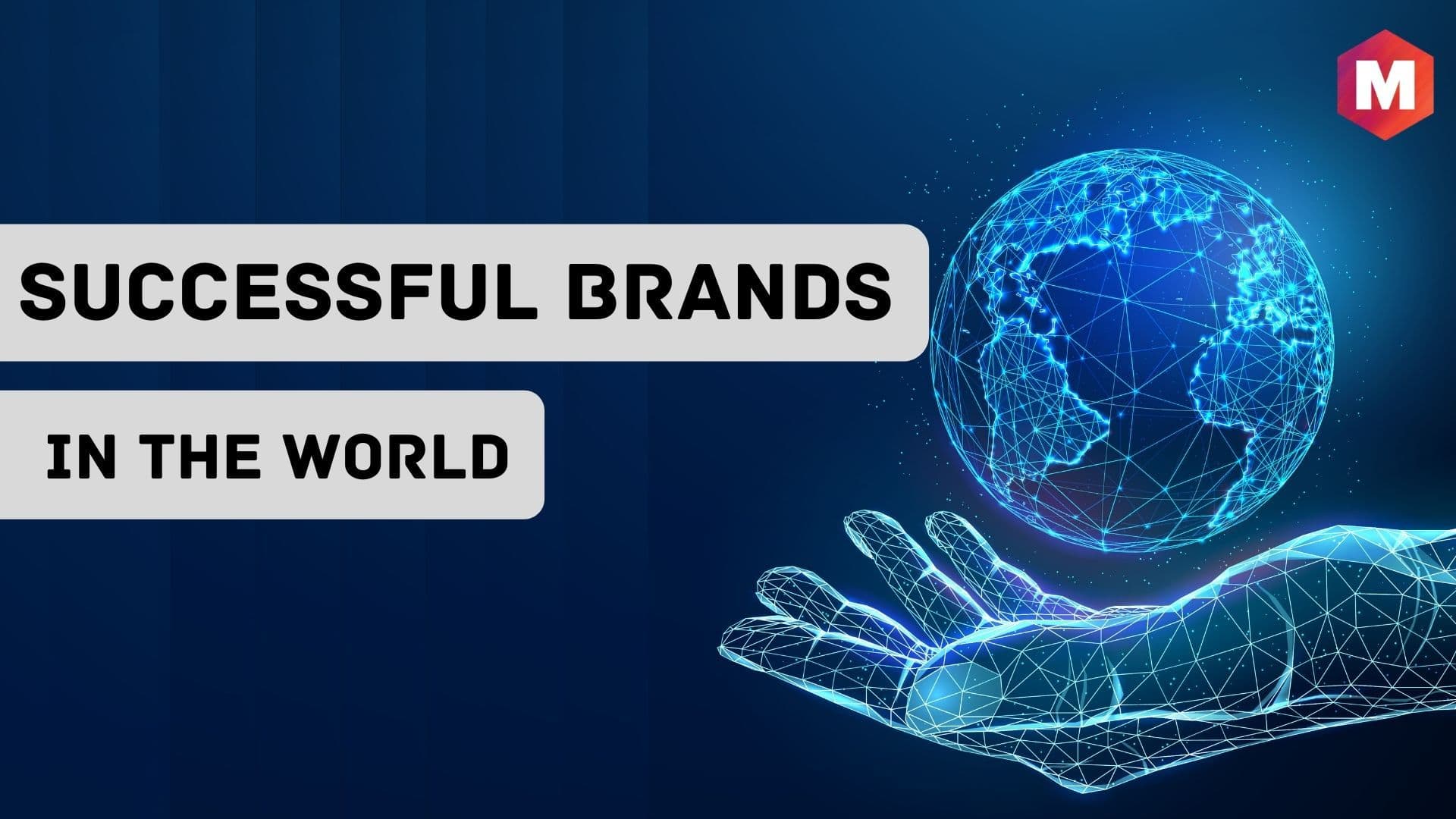Introduction:
For companies looking to broaden their market reach and make a lasting impression on the international scene, building global brands has become a top priority in an increasingly linked world. Strategic execution, meticulous planning, and a thorough grasp of various countries, cultures, and customer preferences are all necessary for developing a worldwide brand. The essential tactics and ideas that underpin the development of prosperous international brands are examined in this article.

Understanding Global Branding:

Identifying a brand:
The mission, personality, essential values, and visual components that characterize a company are all included in brand identity. It embodies the core of the brand’s values and the image it wishes to project to consumers around the globe.
Clearly define your brand identity by combining your mission, values, and unique selling proposition. Your brand identity should stand out from the competition and appeal to people all around the world.
Investigate International Markets:
To determine target markets, customer behavior, cultural quirks, and competitive environments, do in-depth market research. Comprehending the complexities of international markets is crucial to effectively customizing your brand strategy and messaging.
To comprehend the varied demands, interests, behaviors, and trends of consumers in various worldwide marketplaces, thorough market research and analysis are essential. In order to effectively engage with target audiences, brands can modify their offerings and tactics with the aid of this research.

Comparing Localization and Standardization
In their branding endeavors, multinational firms need to find a middle ground between localization and standardization. Standardization guarantees uniformity and coherence across all markets, whereas localization takes into account the cultural, linguistic, and legal quirks of certain areas and modifies products, messaging, and marketing methods accordingly.
Routes of Communication:
Effective global audience outreach requires utilizing a combination of traditional and digital communication platforms. To interact with customers and spread their brand message internationally, brands use websites, social media, public relations, advertising, and other channels.
Reputation management and brand equity:
For global brands, establishing and preserving reputation and brand equity is essential. A brand’s long-term performance and endurance in the global marketplace are largely dependent on its positive brand connotations, customer loyalty, and trust.
Global Branding Standards:
Global brand guidelines provide coherence and consistency in visual identity, customer experience, and brand communication across all markets. These rules offer a foundation for how the brand ought to be portrayed and viewed throughout the world.
Brand Engagement and Experience:
Global branding’s primary goals include generating consumer involvement and producing meaningful brand experiences. Brands aim to establish an emotional connection with customers, foster relationships, and encourage brand loyalty by creating unique experiences that align with their values and goals.

Strategies for Creating Global Brands:
Examine and comprehend international markets:
To determine target markets, customer behavior, cultural quirks, and competitive environments, do in-depth market research.
To guide brand positioning and strategy, analyze economic, regulatory, and market trends.
Omnichannel marketing and digital presence:
Use social media and digital platforms to interact with customers in real time and reach audiences across the world.
Use omnichannel marketing techniques to create unified brand experiences across all touchpoints by fusing online and offline media.
Strategic Alliances and Cooperation’s:
To increase brand awareness and credibility in new regions, establish strategic alliances with regional distributors, merchants, and influencers.
Work together with international organizations, non-governmental organizations, and cultural establishments to match marketing campaigns with social concerns and local ideals.
Superiority and Regularity:
In order to foster brand advocacy and loyalty, provide high-quality goods, services, and customer experiences consistently throughout all markets.
Enforce strict quality control protocols and standards across the whole supply chain to guarantee the integrity and safety of the product.
Inventiveness and Flexibility:
Encourage an innovative and flexible culture to adapt to shifting consumer tastes, market conditions, and new trends.
Make constant investments in R&D to create novel goods, services, and business structures that cater to changing consumer demands.
Participation in the Community and CSR:
Through significant community projects and corporate social responsibility (CSR) activities, interact with stakeholders and the local community.
Customers that value ethical brands will be attracted to your commitment to sustainability, social impact, and ethical business methods.
Customized Customer Service:
Offer regionally specific customer service channels and communications in accordance with time zones and regional languages.
Provide tailored support and assistance to cater to the unique requirements and apprehensions of clients across various marketplaces.
Adjust to Law and Regulation:
Keep yourself updated on the laws, ordinances, and customs that apply in your target markets.
To minimize legal and reputational concerns, make sure that all regulations pertaining to product safety, labeling, advertising standards, and data privacy are followed.

Case Studies of Successful Global Brands:
Apple:
Apple is a shining example of a popular international company that is well-known for its cutting-edge goods, svelte styling, and flawless user interface.
With the help of its recognizable iPhone, iPad, Mac, and Apple Watch products, Apple has established a devoted following and a powerful global brand.
Apple’s reputation for quality and customer happiness is largely attributed to its global retail outlets, online ecosystem, and customer service services.
Toyota:
Toyota is a well-known international automaker that is valued for its inventiveness, dependability, and dedication to sustainability.
Toyota is a global automotive brand that is present in more than 170 countries. Its varied range of vehicles, which includes the Prius hybrid, Camry sedan, and Corolla small, appeals to a broad spectrum of consumer tastes and market categories.
Toyota has established itself as a reliable and well-respected brand in the worldwide automobile market thanks to its reputation for high-quality engineering, safety features, and environmental initiatives.
Nike:
Nike is a well-known international sports company that is well-known for its cutting-edge athletic clothing, accessories, and footwear. Nike’s powerful “Just Do It” tagline and recognizable “swoosh” design have helped the company forge a deep emotional bond with sportsmen and fans around the globe.
Nike’s dedication to social responsibility, performance, and innovation is what drives the success of their brand on a global scale. In addition to collaborating with elite athletes and sports organizations, the corporation has launched campaigns to advance sustainability, diversity, and inclusiveness.is a well-known international sports company that is well-known for its cutting-edge athletic clothing, accessories, and footwear. Nike’s powerful “Just Do It” tagline and recognizable “swoosh” design have helped the company forge a deep emotional bond with sportsmen and fans around the globe.
Through the use of creativity, consistency, cultural adaptation, and smart marketing, these case studies show how successful global businesses connect with consumers throughout the world and achieve sustainable development and relevance in a global marketplace that is becoming more and more competitive.
Associations and Strategic Partnerships:
In target areas, establish strategic alliances and relationships with influencers, distributors, and local businesses. The reach and credibility of your brand can be increased by partnering with well-established organizations, which can also offer insightful information on customer preferences and local market dynamics.
In all brand interactions and communications, show consideration and respect for cultural differences. Celebrate and acknowledge the variety of cultures and customs found throughout the world, being mindful not to insult or alienate local audiences with preconceived notions or insensitive messages.

Respect and Cultural Sensitivity:
Investing in the Development of Brands:
Invest money in PR, advertising, and brand experiences as well as other brand-building projects. Although developing a strong brand presence requires time and money, the long-term advantages can be priceless in gaining the respect and trust of people around the world.
Aspire to Provide Excellent Customer Service:
Provide outstanding customer service experiences that go above and beyond to reward repeat business. Regardless of location, invest in educating and equipping frontline employees to offer clients individualized, timely help at all touchpoints.
Investing in Local Knowledge and Skill:
Employ local talent and form regional teams that are well-versed in the customs, languages, and markets of each area. Local staff members can offer insightful opinions and insights that can assist effectively customize brand plans and campaigns to the particular subtleties of each region.
Modification of Brand Imagery and Messaging:
Adapt visual materials, iconography, and brand messaging to appeal to a range of language and cultural backgrounds. Take into account subtleties in language, symbolism, and color psychology to make sure your brand messaging resonate with local audiences.
Localized Communications and Customer Support:
Offer regionally specific customer service channels and communications in accordance with time zones and regional languages. Improving the entire customer experience and satisfaction can be achieved by providing customer support in the local language and customizing communication channels to fit regional preferences.
Immersion in Culture and Brand Experiences:
Make brand experiences that engross customers in the spirit of your company and its principles. Organize pop-up activations, events, and experiential marketing campaigns that honor regional customs and culture while highlighting the identity and core values of your company.
Participation in Community and Advocacy:
Activate local communities and stakeholders by launching worthwhile campaigns and community projects. Show that you are committed to changing society by supporting charities, social impact initiatives, and local concerns that align with your brand values.
Handling crises and safeguarding one’s reputation:
To reduce risks and preserve the integrity of your brand in international markets, create strong crisis management procedures and reputation protection plans. Maintain a proactive watch on your internet reputation, respond quickly to consumer complaints, and interact openly and honestly with all parties involved in a crisis or dispute.
Polyacrylamide gel fillers are often preferred over typical tissue fillers because they provide long-lasting results and have a low risk of adverse reactions. They also offer a more permanent solution compared to some natural fillers.
Comparison with Generic Synthetic Temporary Fillers and Surgical Implants:
Durability:
Polyacrylamide gel fillers can last for several years, providing long-lasting results compared to some other fillers.
Risk of Adverse Reactions:
Polyacrylamide gel fillers have a low risk of adverse reactions compared to synthetic fillers and surgical implants.
Cost:
Polyacrylamide gel fillers may be more cost-effective in the long run, as they provide long-lasting results with fewer treatments.
Adipose-Derived Stem Cell Therapy:
Procedure:
Adipose-derived stem cell therapy involves harvesting fat cells from the patient’s own body, processing them to isolate the stem cells, and then injecting the stem cells into the desired area to promote tissue regeneration and rejuvenation.
Why it Works:
Adipose-derived stem cell therapy works by harnessing the regenerative properties of stem cells to stimulate tissue repair and rejuvenation. The injected stem cells can differentiate into various cell types, including skin cells, to improve skin texture and tone.
Benefits:
Adipose-derived stem cell therapy offers several benefits, including natural-looking results, long-lasting effects, and minimal risk of adverse reactions.
Why it is Better than Typical Tissue Fillers:
Adipose-derived stem cell therapy is often preferred over typical tissue fillers because it uses the patient’s own stem cells, reducing the risk of rejection or adverse reactions. It also provides long-lasting results and can improve skin quality and texture over time.
Comparison with Generic Synthetic Temporary Fillers and Surgical Implants:
Durability:
Adipose-derived stem cell therapy can provide long-lasting results, as the injected stem cells can continue to stimulate tissue repair and rejuvenation over time.
Risk of Adverse Reactions:
Adipose-derived stem cell therapy has a low risk of adverse reactions, as it uses the patient’s own cells.
Cost:
Adipose-derived stem cell therapy may be more cost-effective in the long run, as it provides long-lasting results with fewer treatments.
Growth Factor Injections:
Procedure: Growth factor injections involve harvesting growth factors from the patient’s own blood or other sources and injecting them into the desired area to stimulate cell growth and tissue repair.
Why it Works:
Growth factor injections work by harnessing the regenerative properties of growth factors to stimulate cell growth and tissue repair. They can improve skin texture, tone, and elasticity.
Benefits:
Growth factor injections offer several benefits, including natural-looking results, minimal risk of adverse reactions, and the ability to improve skin quality over time.
Why it is Better than Typical Tissue Fillers:
Growth factor injections are often preferred over typical tissue fillers because they use natural growth factors, reducing the risk of adverse reactions. They also provide long-lasting results and can improve skin quality and texture over time.
Comparison with Generic Synthetic Temporary Fillers and Surgical Implants:
Durability:
Growth factor injections can provide long-lasting results, as the injected growth factors can continue to stimulate tissue repair and rejuvenation over time.
Risk of Adverse Reactions:
Growth factor injections have a low risk of adverse reactions, as they use natural growth factors.
Cost:
Growth factor injections may be more cost-effective in the long run, as they provide long-lasting results with fewer treatments.
Benefits vs. other types of fillers
Results That Look Natural
The outcomes that biologic tissue fillers produce are primarily pleasing to the eye. Biologic tissue fillers, as opposed to synthetic fillers, which can occasionally give an unnatural appearance, enhance facial contours by using body-natural materials like fat or platelets. This may result in a more natural-looking end product and a more seamless connection with the surrounding tissues.
Decreased Potential for Allergic Reactions
Allergy responses are less common with biologic tissue fillers than with synthetic ones. The possibility of unfavorable allergic reactions is reduced because these fillers use substances that come from the patient’s own body or natural sources. For those who are allergic to or have sensitivity to the synthetic ingredients used in traditional fillers, biologic tissue fillers are a safer alternative.
Elongation and Integration of Tissue
The lifetime and natural integration of biologic tissue fillers with surrounding tissues is another benefit. For instance, fat grafting entails moving fat cells from one part of the body to another. These fat cells can create a blood supply and blend in with the surrounding tissues after transplantation, producing outcomes that last. In a similar vein, PRP injections promote tissue regeneration and collagen synthesis, which eventually results in long-lasting changes to skin volume and texture.
Possibility of Regenerating Tissue
Beyond just increasing volume, some biologic tissue fillers, including PRP and fat grafting, have further advantages. Because transferred fat contains stem cells originating from adipose tissue, fat grafting in particular can enhance skin quality and stimulate tissue regeneration. PRP works well for hair restoration and skin rejuvenation because it contains cytokines and growth factors that promote cellular repair and regeneration.
Individualization and Tailoring
Increased personalization and modification of treatment regimens are possible with biologic tissue fillers. These fillers can be customized to match specific demands and aesthetic objectives because they come from the patient’s own body or natural sources. Healthcare professionals may address specific problems and achieve the best possible outcomes for each patient with this individualized approach.
Differences between each of them
Fat grafting:
By extracting adipose tissue from one part of the body, like the thighs or belly, and injecting it into another, like the face or breasts, fat grafting, often referred to as autologous fat transfer, is possible. Usually, the procedure entails multiple steps:
Gathering: Liposuction methods are employed to gather adipose tissue.
Preparation: To get rid of extra moisture and contaminants, the fat is prepared.
Injecting pure fat back into the targeted treatment area helps it regain its volume and shape.
Important Disparities:
This lowers the possibility of allergic responses or rejection because fat grafting uses the patient’s own tissue.
Length: Although some reabsorption may happen over time, the effects of fat grafting might continue for a long time.
Advantages include the possibility of tissue regeneration in addition to volume augmentation from fat grafting.
Platelet rich plasma therapy
In platelet-rich plasma (PRP) therapy, platelets are extracted and concentrated from the patient’s blood to produce a serum that is high in cytokines and growth factors. After that, the skin is injected with this serum to encourage tissue regeneration, enhance skin texture, and increase the production of collagen.
Conclusion:
A complex strategy that includes brand identity, market research, localization, digital marketing, innovation, and customer involvement is needed to create a worldwide brand. You can position your brand for international success and create a long-lasting presence in global marketplaces by matching your brand strategy to the requirements and preferences of consumers everywhere. Businesses can create famous worldwide brands that connect with consumers on all continents and in all cultures by paying close attention to planning, executing their strategy, and offering value and excellence.
- All Posts
- Uncategorized

Dr. Daniel Davidson, MD, MBA Introduction: The goal of success for businesses nowadays is to establish a global brand because…

Dr. Daniel Davidson, MD, MBA Introduction: Stem cells have captivated the imagination of scientists and the public alike for their…

Dr. Daniel Davidson, MD, MBA Introduction: Platelet-rich plasma (PRP), fat grafting, and dermal fillers made from natural sources are examples…
